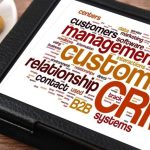When is the optimum time to send an email newsletter? is a perennial discussion topic in email marketing. There isn’t just one ideal moment, is the reply. You did read it correctly. It’s not as easy as choosing a certain day or time to enhance email engagement rates.
When it comes to email marketing, we “know a thing or two because we’ve seen a thing or two,” much like Farmers Insurance. We analyze more than 100 billion emails annually to provide a report on engagement and trends in email marketing. And what have we discovered, do you know? Depending on the sector, audience, and engagement objectives, there are several optimum times to send email newsletters. The best time to send an email newsletter varies depending on the recipient.
A newsletter created specifically for your product, brand, and target market is the basis of email marketing engagement. Your email campaigns must be tested, analyzed, and optimized over time in order to achieve this. How does this seem in actual time? Let’s get going.

Examining and Testing Your Emails
Testing what functions and doesn’t function for your audience in every area is the cornerstone to perfecting email engagement. This entails testing the email’s subject lines, text, images, and other crucial components at various times of the day.
Keep in mind that depending on your audience, product, and email kind (for example, feature announcement vs. welcome email), this may vary. Even though testing so many variables with several segments may seem intimidating, there is a methodical technique to conduct email tests that will make spotting patterns easier: Testing A/B.
1. Organize your email subscribers’ lists into segments
Divide your email list into smaller lists based on important factors like demographics, company type, purchasing patterns, or region to segment your subscriber base. You may use segments to understand what affects each brand audience the most and to deliver future email marketing that is even more specifically focused. The ideal segmentation tool for your email marketing platform will make this process simple. On the platform of Campaign Monitor, it functions as follows.
2. Develop a Theory or Hypothesis
After segmenting your lists, you should create a hypothesis, or “informed guess,” just like you would for a scientific experiment. Choose a section of your list to concentrate on before selecting a single aspect that is important to that group to test in order to establish your hypothesis.
You could, for instance, estimate with reasonable accuracy what would happen if you changed the time at which you sent welcome emails. Your hypothesis should be S.M.A.R.T., much like a goal (Specific, Measurable, Achievable, Relevant, and Timebound). Your hypothesis in this scenario may be that “sending welcome emails within 10 minutes of a user joining would boost email open rates by 6% over the following three months with the new user cohort.”
3. Separate each section into two test groups, “A” and “B”
With your hypothesis in place, divide the subscriber segment into two groups: “A” for the control group and “B” for the test group. To prevent findings from being biased, divide the section evenly at random. Utilizing an email service provider (ESP) with integrated A/B testing is the simplest approach to accomplish random group selection.
To secure the most reliable data, determine if each group is big enough to provide statistically significant findings. The test will be more likely to simply reflect the outcomes of chance if the groups are too small or not sufficiently diverse. A bigger group, however, will improve findings’ accuracy by lowering the likelihood of randomness.
A few variables and a lot of math decide whether a group is statistically significant. Use an A/B test calculator to quickly determine the correct size if you’re not a statistician or just dislike math (because who does?). Typically, a suitable beginning size is at least 1,000 subscribers, however this number might vary based on the test and subscriber list.
4. Develop “A” and “B” test materials
Create two copies of the identical email with only that one part altered to test your theory, then compare the results. Create two identical welcome emails, for instance, and send one at your usual time and the other at the time indicated by your hypothesis. The control email should be sent at the same time as the welcome email, using the previous example of the hypothesis as a guide. To compare the efficacy of your test group email to the baseline findings from your control group, the test group email might be issued 10 minutes after the new user joins.
The time you send each email should be the sole distinction between the two. Testing using several variables is referred to as multivariate testing. A multivariate test, for instance, might be used if you wanted to test alternative subject lines and the time the email is delivered. Only test combinations of various factors when you should utilize multivariate testing. Additionally, multivariate testing should only be used after each piece has been tested separately.
For instance, after you’ve tested and determined the best time to send your email, you may combine it with successful subject lines to assess the overall impact. It might be challenging to ascertain which elements of an email are contributing favorably or unfavorably to the overall result if you try to test them all at once.
5. Use a platform that can measure the outcome of your test
Finally, it’s time to start your exam. To quickly analyze and evaluate the outcomes, make sure your email is sent through an ESP with a robust analytics dashboard. Just be sure to separate everything else from the variable you’re testing. Therefore, avoid using varied subject lines and sending at various times of the day or week when testing send timings. Just modify the time sent, but keep the subject lines the same in both emails.
Study the information
After your test has been completed, it’s time to evaluate the results and decide whether or not your hypothesis was true. Examine the open rates for each email segment while verifying the aforementioned hypothesis, for instance, to gauge the effect of send time. The “winner” would be the group with the greatest open rate.
If you’re utilizing an ESP with integrated A/B testing, the platform should handle the majority of the labor-intensive tasks for you. For instance, you may simultaneously examine graphs of your findings and conversion figures in Campaign Monitor’s A/B test analytics dashboard.
Examine the findings in light of your overall email newsletter success in addition to how they apply to the specific test. You’ll be able to learn more about how it could affect different email segment types as a result. Consider doing the same test with other list segments, for instance, whether a customized subject line boosted open rates with new clients.
Adapt optimization based on findings
The use of the data you collect and evaluate will determine how useful it is. Implementing the improvements suggested by the test findings and iterating on them continually are crucial for long-term viability. Your email marketing strategies must alter as your audience’s requirements change and your brand most likely develops. A/B testing need to be a regular procedure for successful adaptation.
Please take note that the effects of your email optimization choices will differ. Therefore, before making adjustments to your email marketing, it’s crucial to have a clear main purpose. According to our study, the optimum time and day to send an email depends not just on your business but also on your objectives.
For instance, Tuesdays often have the greatest click-through rates whereas Mondays typically have the highest open rates (CTR). Therefore, Monday could be a better day if your objective is to increase open rates. But if a higher CTR is what you’re after, Tuesday would be a wiser choice. Testing all of this with your unique email list is crucial since it’s dependent on your business and target market.
Since the audience is once again a key factor in email optimization, it’s crucial to customize your adjustments to each target group. Broad, all-encompassing modifications to your email marketing strategy often have lower success rates. For the maximum effect, they must be customized and geared toward the requirements of each target group. In fact, 91 percent of customers are more inclined to buy with a business that provides a customized experience, according to Accenture study.
Learning when to send a newsletter to your audience
The email marketing software created for actual marketing experts is called Campaign Monitor. A successful email marketing plan is predicated on the patterns that our email marketing statistics reveal.
In your own Campaign Monitoring dashboard, find the patterns that are exclusive to your audience. Here, you won’t find any gimmicky email features, adorable monkeys, or educated assumptions. Instead, you will get up-to-the-minute information that will help you understand what your clients want and need. You’ll learn what motivates your audience to take action in addition to when to send them emails at the optimal moment.



